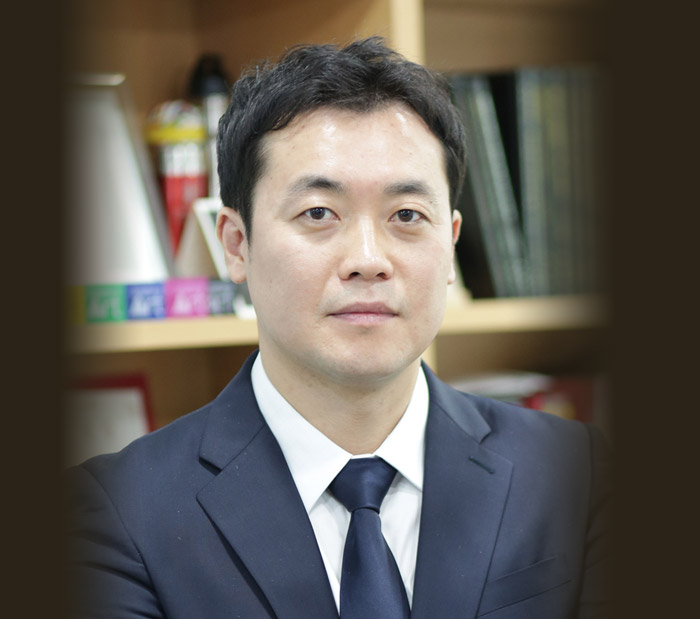Research Stories
Development of Triboelectric Energy Device Technology to Efficiently Harvest Horizontal Force-Based Energy
Successful Development of Triboelectric Energy Device Technology That Harvests Energy With High Efficiency in Various Directions of Movement
Chemical Engineering
Prof.
PANG, CHANGHYUN
천성우 박사
Despite the high-performance energy generation capabilities of previously reported triboelectric generator (TENG) devices, sensitive and efficient energy harvesting under contact/noncontact horizontal forces induced by in-plane stimuli is highly desirable for realizing portable and wearable electronics. Prof. Changhyun Pang in the Department of Chemical Engineering at Sungkyunkwan University (SKKU) reported on the versatile strategy for harvesting in-plane stimuli in TENG devices. A related research paper was published on the cover of Advanced Materials (Impact Factor 25.809).
For wearable device applications that can be incorporated into cloth fabrics, accessories (watches, eyeglasses, etc.), and human skin, the power source is a crucial issue for long-term sustainable operation. The periodic recharging and exchanging of primary batteries causes maintenance time and costs. In this reason, Energy harvesting technology is considered an alternative solution to the power supply issue. In particular, a nanogenerator based on the triboelectric effect of two separated layers has been proven to be effective in utilizing irregular mechanical energy that is abandoned in everyday life.
The architecture of a triboelectric nanogenerator (TENG) is mostly responsive to vertical pressure that leads to the contact of two separated layers. However, the efficient and sensitive generation of energy is not limited to the vertical direction. For example, in human body motion, friction as an energy generation source is mostly caused by a horizontal rubbing motion. So far, there has not been a pragmatic strategy to harvest the motion energy from various directions.
The Pang’s team suggested a versatile strategy for TENG to transform in-plane kinetic energy into electricity. The assembled hairy-structures on the conventional TENG devices converts in-plane sliding motions into vertical vibration-like friction. This phenomena is due to momentary stress relief in transition between each of the pillars. Furthermore, the researchers also demonstrated that the microstructure is effective in capturing noncontact airflow due to the formation of dynamic vortices. This work showed an energy harvesting strategy that could be used for future wearable devices.
Paper
S. Chun, C. Pang, S. B. Cho, A Micropillar-Assisted Versatile Strategy for Highly Sensitive and Efficient Triboelectric Energy Generation under In-plane Stimuli, 32, 1905539, 2020.


